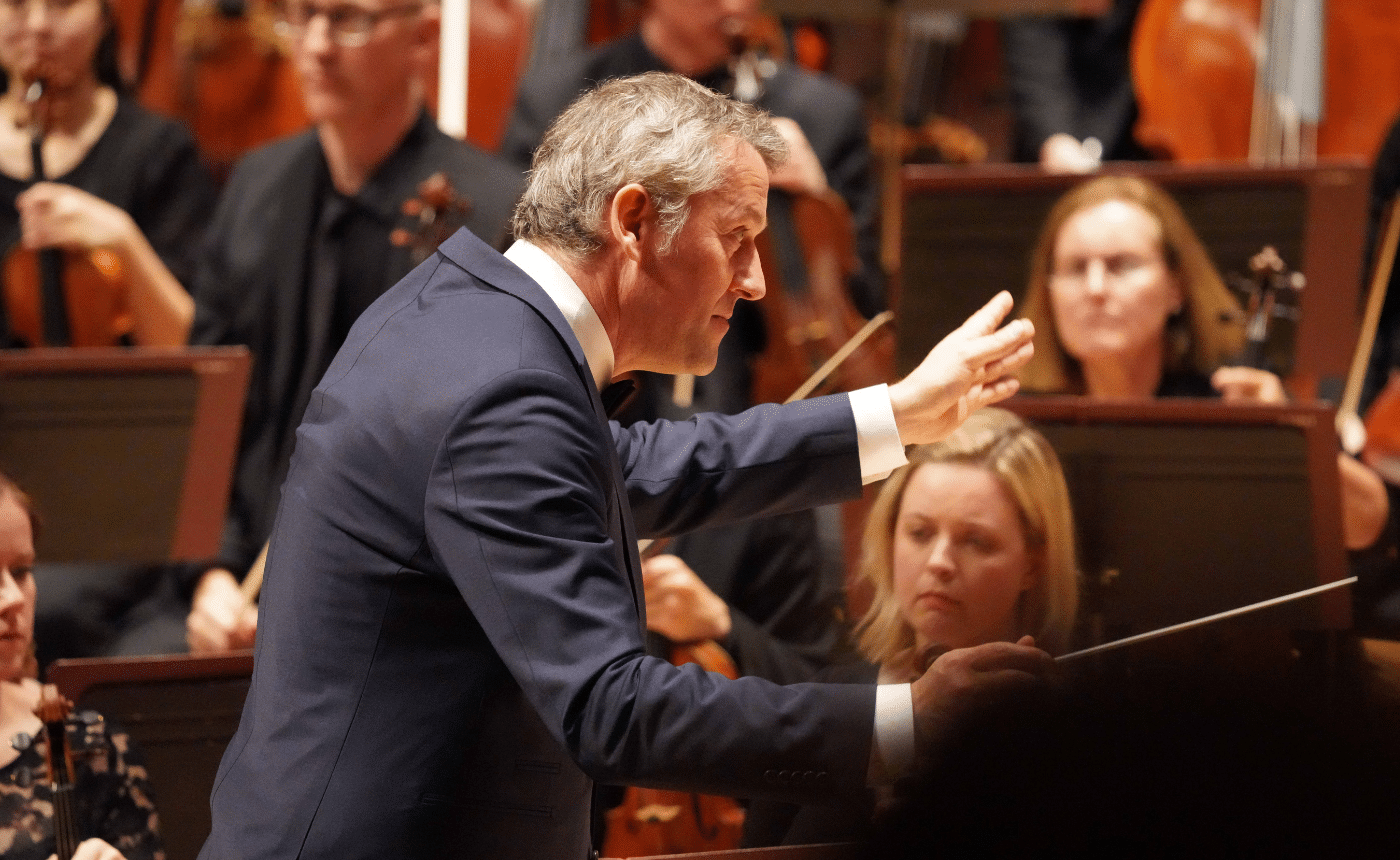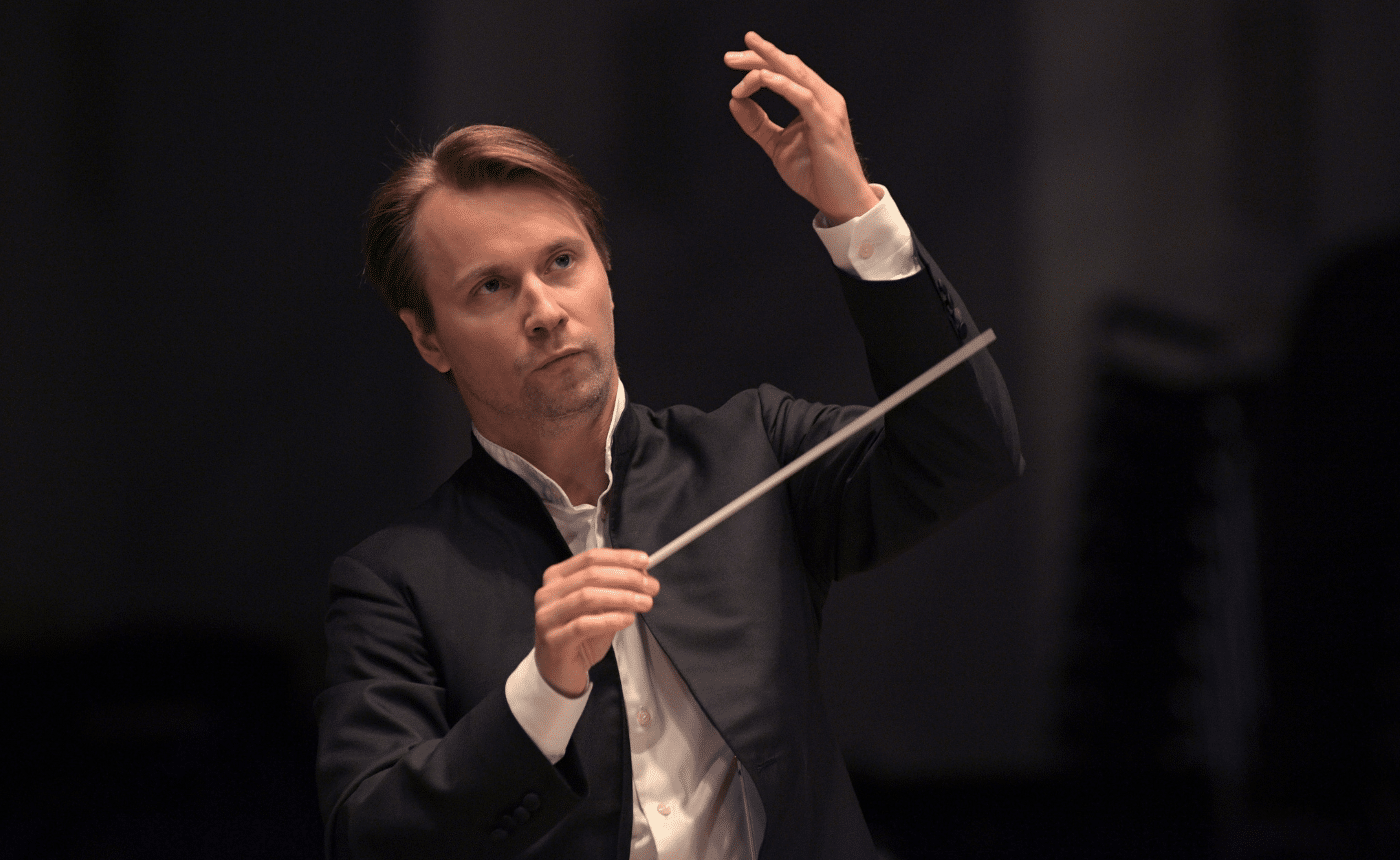Utah Symphony’s Beethoven Timpani
by George Brown, Utah Symphony Principal Timpanist
I’d like to begin by actually recommending a film that’s near & dear to my heart, and would be to ANY lover of Beethoven’s music. It’s a BBC docudrama entitled Eroica — the Day that Changed Music Forever, starring Ian Hart. It also features a wonderful European chamber orchestra performing the entire work (they double as actors in the film) called the Orchestre Revolutionairre et Romantique, whose players all perform on authentic instruments of the period (and quite marvelously, I might add). The movie tells the story of the very first rehearsal of Beethoven’s ground breaking Third Symphony (Eroica) and of the impact it had, that fateful day, upon the musicians and those few select members of Vienna’s aristocracy fortunate enough to witness this most unique event. Though not historically 100% accurate, from what some music historians have claimed, those few inaccuracies are mostly events that happened on other days, combined into this particular day. Every Beethoven lover should see it, and it’s available for rental on Netflix, or for purchase at Amazon or ArkivMusic.com. (This film also plays a part in the story I’m about to tell, which is why I’m going on so about it.) So get your hands on this film and see it, ok? If you cherish the music of Beethoven, you will NOT be disappointed. Now, onto the story:
Last October, Maestro Fischer and I spoke in his office about this season’s Beethoven Festival, still eleven months away from us at the time. He commented that while he enjoyed the sound of my timpani for the larger repertoire like Shostakovich, he said that for the Viennese Classical Period in general (Haydn/Mozart/Beethoven, etc.), he had a very different timpani sound in mind. Knowing that he was mentored by conductor Nicholas Harnoncourt (and already knowing well a few Harnoncourt recordings in my possession), I knew instantly to what he was referring and what he wanted from me. He then shared with me a dream he’d been harboring: to procure a new set of instruments specifically made to get that particular sound for these particular composers; and better still: that dream included having the new drums arrive here in time to begin our Beethoven Festival.
Now, it can be an intimidating, in some instances an ego bruising (or even frightening) thing for a middle-aged professional musician to be told by one’s new Music Director to “change one’s sound.” But it is an entirely different matter for the Boss to say he wants to assist you in acquiring a new instrument to help you GET that sound. My mind instantly began racing between thoughts such as, “Whew, dodged the bullet on THAT one,” and “OH MY GOD: NEW TOYS!!!”
Even better, he said he didn’t have in mind a particular type or brand of drum he wished to impose upon me, but rather implored me to search the marketplace internationally and find the drum which would give him the sound he had in his head but with the particular features I desired.
So, what is this sound Thierry seeks; and how does it differ from the sounds I get from drums I’ve enjoyed playing here for over twenty years? I feel that a smidge of music history would be helpful here. One aspect of musical life that changed the most since the days of Viennese Classicism is that both composers & orchestra musicians were freed from simply being the property of the aristocracy (owing to Europe’s many populist upheavals from the French Revolution through the similar revolts it spawned until the mid 19th century), & as such, music became increasingly, a commodity “Of and For the People.” Thus, as more common folk then began attending orchestra concerts, bigger concert halls were built to house the larger crowds. Composers, in turn, wrote for larger orchestras to successfully fill these bigger rooms with sound. By the way, this was also generally good for the industry from Labor’s (our) point of view as orchestra musicians transitioned from being at the disposal of Kings and Counts to being Independent Contractors (read: giggers). In turn, Europe’s instrumental guilds, some of which had already been existence there for several centuries — like the Timpanists’ Guild — went from simply teaching instrumental techniques to ALSO instructing musicians in how to negotiate a fair contract for themselves (thus planting the seeds for what ultimately became our industry’s labor movement). But I digress….
Along with bigger orchestras, the engineering and technology for ALL symphonic instruments developed with an eye (ear?) towards producing a bigger sound to help fill these increasingly large venues, and the timpani is no different in that regard. Ergo, today’s modern kettledrums have developed into instruments with more volume and a longer resonance than the drums of Beethoven’s day. Interestingly however, that extra resonance came at the expense of some of the more focused, articulate and PUNCHY attack sounds articulated by timpani of the early 19th century. And THAT is the sound for which Maestro Fischer yearns when he hears Beethoven, for that extra ‘punchiness’ can impact how the entire orchestra (even playing on modern instruments) can approach “getting after” their bigger passages. Indeed, this is exactly how Thierry has been exhorting the orchestra to attack their notes on Beethoven’s 9th this week — with that very same punchy sound they are hearing from these new drums.
So, a word about the drums themselves. They are produced by the Lefima Corporation, a manufacturer of timpani (modern day instruments as well) and percussion gear located in Cham, a village in southern Germany. The kettles are the size and bowl shape fashioned to give Maestro Fischer the Classical Era sound he seeks, yet include modern day engineering features to produce a big enough sound to fill Abravanel Hall quite nicely (as well as other features that make my gig easier). As early 19th century timpani had no tuning pedals like my modern day drums — tuning pedals were not developed until closer to the 20th century — these timpani traverse their full octave ranges by use of a single crank turning a belt which encircles the drum and connects each drum’s eight tuning points. So, when the player turns the crank clockwise, these eight tuning points — connected by the belt — apply tension equally around the drum-head, & thereby driving up the pitch. The photos in the following web page will illustrate this.
So, after our initial discussion last October, I set about searching for just the right drum, because up to that point I literally knew nothing about these Lefimas. After a few weeks, a colleague in Munich told me to go onto their website, and once I did, I realized I’d probably hit ‘pay-dirt.’
At the same time, I decided to immerse myself into the particular sound Thierry wanted by augmenting my already hefty Beethoven Symphony recording collection, and then studying them closely with headphones while pouring over their timpani parts. I specifically chose two complete sets to download from iTunes: one by the Chamber Orchestra of Europe (with Fischer’s mentor: Nicholas Harnoncourt conducting and, I’m assuming, with Thierry playing flute) and the other by the group I mentioned at the beginning of this rant, the Orchestre Revolutionairre et Romantique, performing all nine symphonies on authentic ‘period instruments’ of the day. Then upon sending the link for the Lefima drum website to maestro Fischer for his approval (or not), a most remarkable thing happened. What I didn’t know was that Thierry already knew these exact drums quite well, and knew just as well of what they were capable. Several years prior to all this, he’d had a very similar discussion with the BBC/Wales Orchestra Timpanist, Steven Barnard, and had sent Steven upon his own hunt for just the right drum for just that certain sound. After snooping around the industry, Mr. Barnard had also selected the very same Lefima Single Crank Timpani whereby the BBC orchestra ordered a set for purchase. It seems they’ve been playing Beethoven with these drums for years in Cardiff. And I had absolutely no knowledge of any of this until after I’d selected the same Lefimas, quite independently. No wonder Thierry was so thrilled with my choice!!
And so here we are. The drums are here, and they sound superb. The Boss is happy – I feel like a kid in a candy store — and the accolades from players, management and the audience just continue to roll in. And I didn’t fully realize until this week just how these new (‘antique’) timpani figured all along so prominently into the Maestro’s vision for overhauling the sound of the Utah Symphony, literally, from the bottom-up. And now I understand better why this season is increasingly being referred to as Beethoven Boot Camp.











